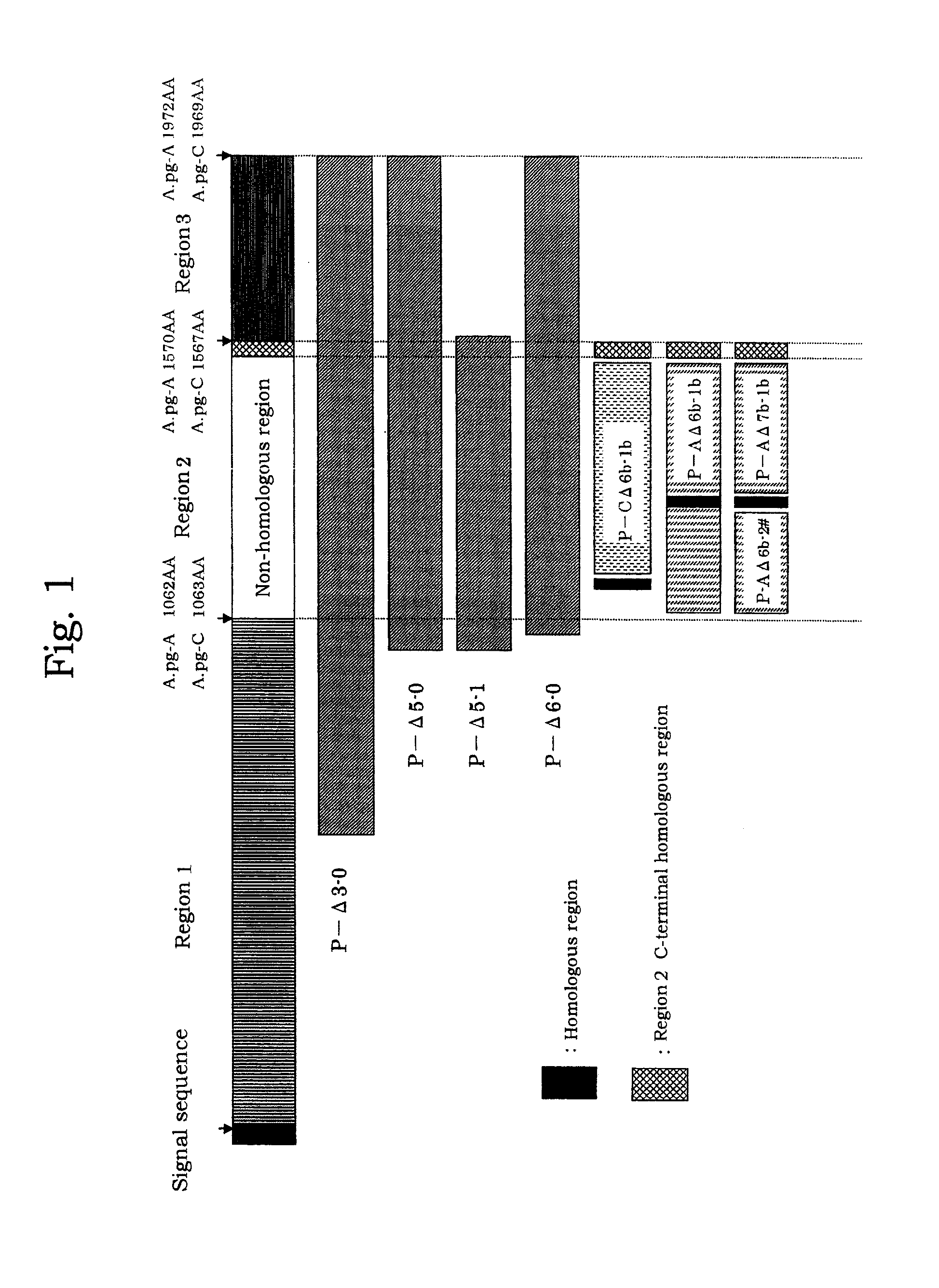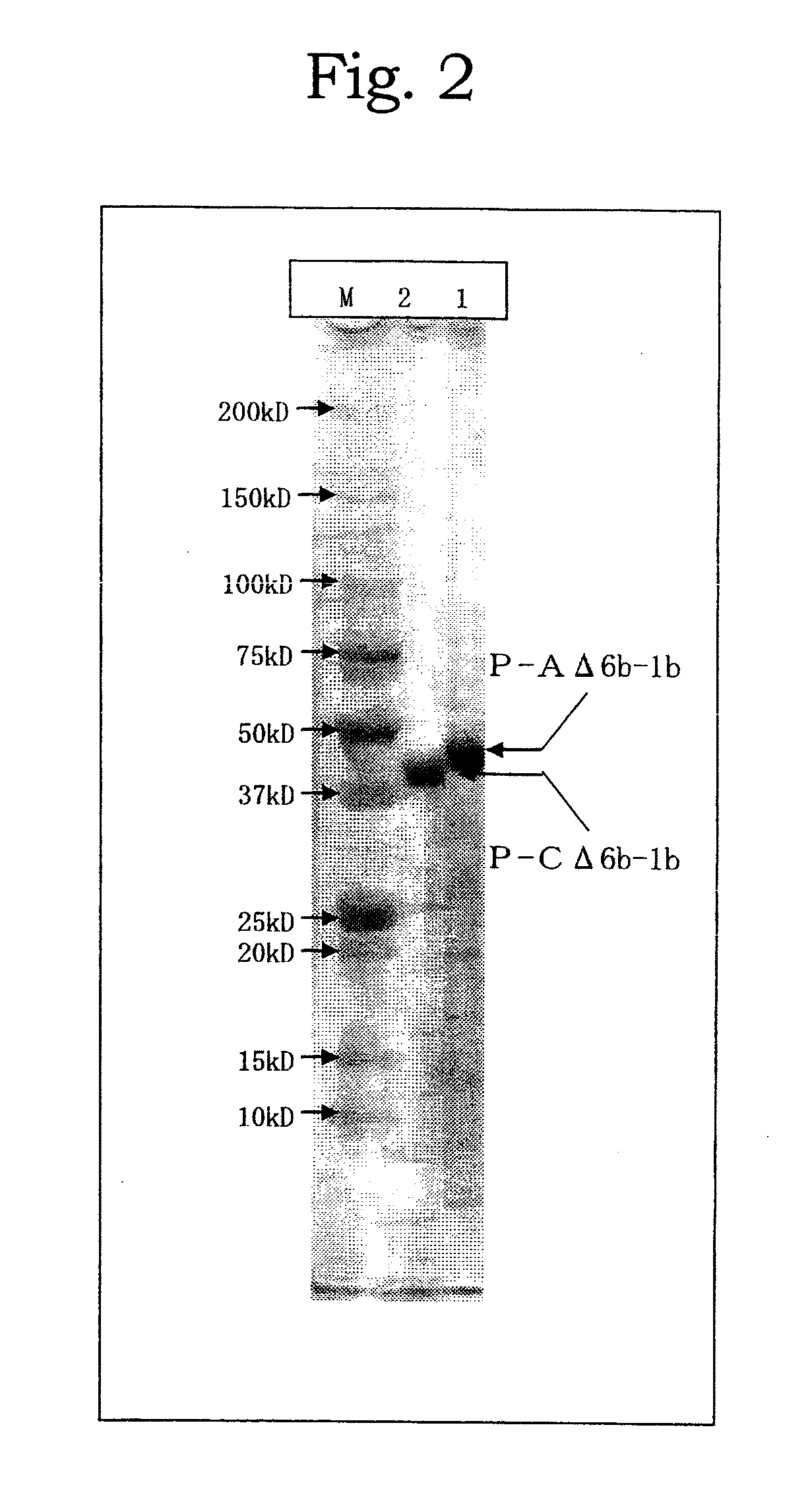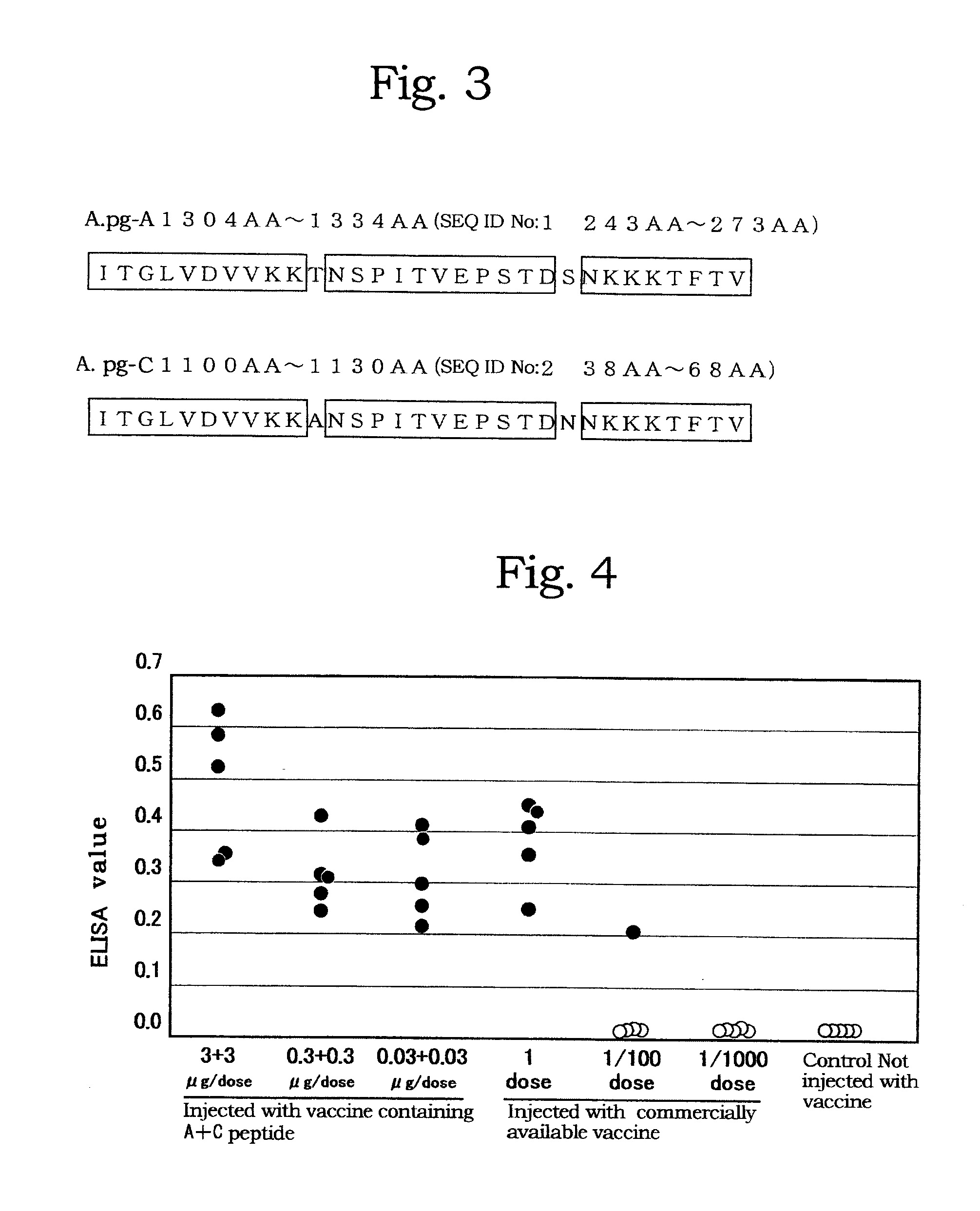Method and kit for detecting antibody to avibacterium paragallinarum
a technology of avibacterium paragallinarum and kit, which is applied in the field of methods and kits for detecting antibodies to avibacterium paragallinarum, can solve the problems of troublesome procedures, troublesome preparation and adding plates, etc., and achieve the effect of higher detection sensitivity
- Summary
- Abstract
- Description
- Claims
- Application Information
AI Technical Summary
Benefits of technology
Problems solved by technology
Method used
Image
Examples
example 1
Preparation of A.pg-1.3 Gene and DNA Fragments within Region of Said Gene
[0070]Genomic DNA libraries were prepared from A.pg-A 221 strain and A.pg-C 53-47 strain in accordance with the method of Tokunaga et al. (Japanese Patent Publication No. 10-84969). Briefly, chromosomal DNAs were extracted from cells collected by centrifuge (8,000 rpm, 20 minutes) using SepaGene kit (Sanko Junyaku Co., Ltd.), and digested with restriction enzyme Sau3AI to prepare DNA libraries. Using DNA fragments from the DNA libraries as a template, PCR was performed with LA Taq (TAKARA BIO Inc.) in accordance with protocol attached thereto to amplify fragments each consisting of a portion of the A.pg-1.3 gene. PCR reaction was carried out with LA PCR kit vert (TAKARA SHUZO CO., LTD.) at 96° C. for 1 minute; then 30 cycles of at 96° C. for 40 seconds, at 56° C. for 60 seconds, and at 72° C. for 120 seconds; and at 72° C. for 10 minutes. FIG. 1 shows positional relationship of each of the DNA fragments. Amplif...
example 2
Expression of Each of DNA Fragments
[0071]Each of the DNA fragments obtained in Example 1 was digested with suitable restriction enzymes and after separation on 0.8% agarose electrophoresis the amplified fragments were eluted and recovered with Quantum Prep Freeze N Squeeze DNA Gel Extraction Spin Co kit. The obtained fragments were ligated to plasmid pQE30 (QIAGEN: 6 His-tag sequences are present immediate downstream the initiation codon) or pET22b, which has been digested with the same restriction enzymes as above and the 5′-end of which has been dephosphorylated. The resulting plasmids were used to transform E. coli JM109 strain. E. coli comprising the amplified fragments was cultured overnight in Circle Grow medium (Funakoshi Co., Ltd.) supplemented with ampicillin and on the next day IPTG was added at a final concentration of 1 mM for further culture for 2.5 hours. After centrifuge (10,000 rpm, 5 minutes), supernatant was discarded and precipitate was suspended in an amount of 1...
example 3
Preparation of Anti-Polypeptide Chicken Sera
[0072]The polypeptide P-AΔ5-1 obtained in Example 2 was diluted with PBS to 10 μg / dose and added with aluminum hydroxide at a final concentration of 20%. The resultant mixture was administered subcutaneously to SPF chickens of 5 weeks old at the neck twice at an interval of 3 weeks for immunization. For the other polypeptides P-AΔ3-0, P-AΔ5-0, P-CΔ5-1 and P-CΔ6-0, they were diluted with PBS to 10 μg / dose and emulsified with an oil adjuvant (0.01 g antigen, 0.001 mL or less formalin, 0.01 mL Polysolbate 80, 0.04 mL sorbitan sesquioleate, 0.36 mL light liquid paraffin, the remainder phosphate buffer per dose (0.5 mL)) and the resultant mixture was once administered subcutaneously to SPF chickens of 5 weeks old at the neck. The chickens at 9-11 weeks old were bled to give immunized sera to each of the polypeptides.
PUM
| Property | Measurement | Unit |
|---|---|---|
| temperature | aaaaa | aaaaa |
| pH | aaaaa | aaaaa |
| temperature | aaaaa | aaaaa |
Abstract
Description
Claims
Application Information
 Login to View More
Login to View More - R&D
- Intellectual Property
- Life Sciences
- Materials
- Tech Scout
- Unparalleled Data Quality
- Higher Quality Content
- 60% Fewer Hallucinations
Browse by: Latest US Patents, China's latest patents, Technical Efficacy Thesaurus, Application Domain, Technology Topic, Popular Technical Reports.
© 2025 PatSnap. All rights reserved.Legal|Privacy policy|Modern Slavery Act Transparency Statement|Sitemap|About US| Contact US: help@patsnap.com



